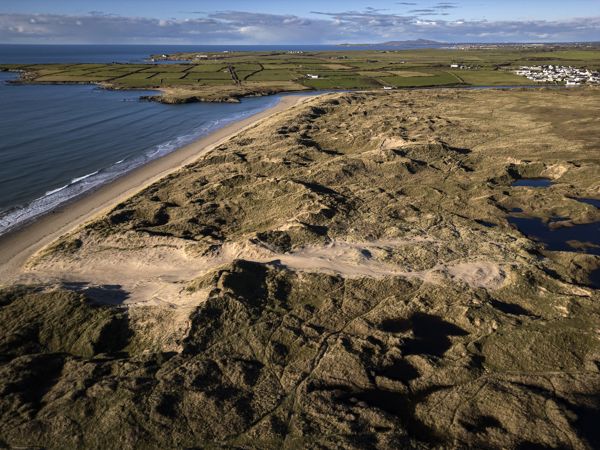Five-year project helps protect threatened landscapes and wildlife

Restoration and habitat work equalling almost 500 football pitches has taken place at Welsh sand dunes.
The Sands of LIFE project, funded by the EU and led by Natural Resources Wales (NRW), is ending after five years of recreating natural movement in dunes and revitalising habitats housing some of the country’s rarest wildlife.
Work has taken place at sites including Tywyn Aberffraw, Newborough, Morfa Harlech, Morfa Dyffryn, Laugharne-Pendine Burrows, Whiteford Burrows, Pembrey Coast, Kenfig Burrows and Merthyr Mawr Warren.
A total of 350 ha of works have taken place including habitat restoration, bare sand creation and new grazing areas – equating to 490 football pitches.
Other benefits include the construction of 29 km of fencing and 23 artificial rabbit warrens while four items of unexploded training ordnances dating from the Second World War have been disarmed.
Sand dunes are listed as the habitat most at risk in Europe and support more than 70 nationally rare or Red Data Book species.
They are made up of a variety of unique habitats, including bare and mobile sand, wet dune slacks and fixed dune grassland, all of which are sensitive to climatic and human influences.
These habitats support a high diversity of rare and specialised plant and animal species, many of which are classified as threatened or vulnerable.
The project’s success is being celebrated ahead of World Sand Dune Day on June 29, which highlights these unique landscapes.
Kathryn Hewitt, Sands of LIFE Project Manager for NRW, said:
“Sand dunes are some of the best locations for wildlife in Wales.
“They are hotspots of biodiversity, home to singing skylarks, carpets of orchids, helleborines and gentians, as well as a wealth of invertebrates such as butterflies, rare beetles and mining bees.
“Unfortunately, many sand dunes in Wales are in poor condition and species are under threat of extinction, due to climate change, air pollution and other human impacts, or simply lack of sympathetic management.
“Just 8,000ha of sand dunes remain – 0.3 per cent of the land mass of Wales. Dunes cannot be re-created and their form and habitats are highly specialised. The funding by the LIFE programme and the Welsh Government has been invaluable, giving us the chance to tackle these issues on a large scale.
“We are immensely proud of the work that has taken place over the last five years. The project has created more than 30 hectares of new bare sand on the dunes which rejuvenates the habitat allowing the rarest species to recolonise.
“Conifer plantations, invasive scrub and alien species, like Sea Buckthorn and Cotoneaster, smother dune vegetation and have a negative effect on nutrient and water levels - so clearance of these restores open dune habitat.
“Fencing allows the dunes to be grazed by ponies, cattle or sheep to prevent overgrowth of vegetation.”
Approximately 30 per cent of the original sand dune area in Wales has been lost to development and erosion since 1900, and most of the remainder has become over-stabilized by vegetation in the past 50 years, resulting in significant loss of biodiversity.
Kathryn added:
“Active conservation action like this, can make a real positive difference for threatened dune wildlife. I would like to thank the site managers and all our other colleagues and partners who made the work possible.”
